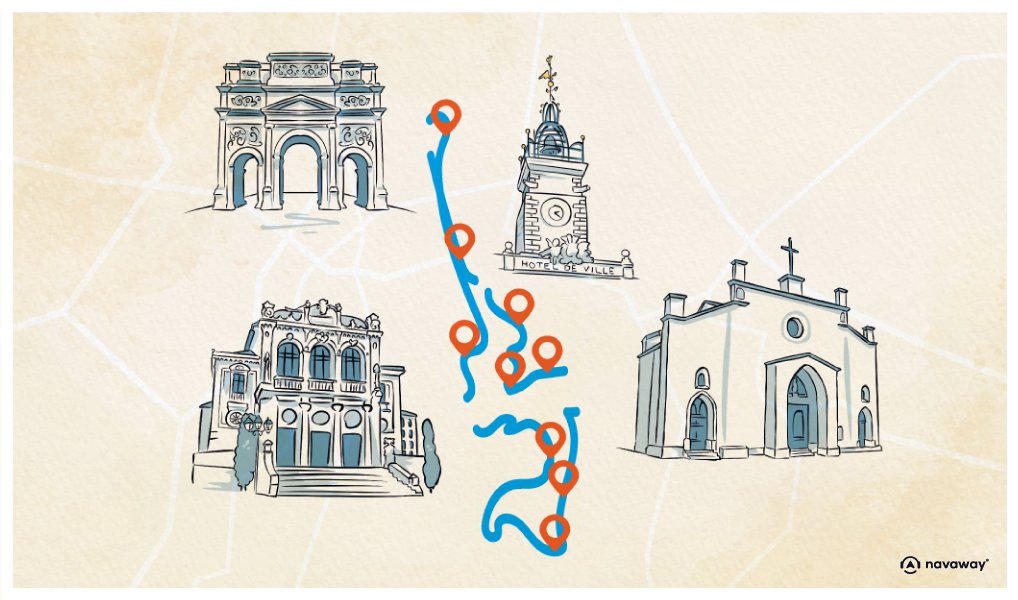
Castle of the Princes of Orange

This point of interest is available as audio on the tour: Visit Orange, The City of Princes
From here, you have a bird’s-eye view of the Saint-Eutrope hill, once home to the castle of the princes of Orange-Nassau. Our initial tour took you as close as possible to these remains to tell you their story, but access to the hill is now impossible. Major restoration work is underway to breathe new life into this important heritage site. After three centuries of oblivion, the town of Orange has taken the initiative and launched a gigantic project to safeguard and enhance the Saint-Eutrope hill, the Capitole and the castle. The first phase of work is due to last 3 years, while the entire project will span 12 years. So we’re not exactly looking at an overnight transformation; it will be a while, but the results will be worth it! While we wait, I’ll take you on a journey through time. In the Middle Ages, the site was home to a fortress, and later to a princely castle. In fact, after the fall of the Roman Empire in the 5th century, Orange faced the threat of barbarian invasions and thus organized its hilltop defense. In the 12th century, Tiburge, daughter of Rambaud II, had a feudal castle built on top of the existing Roman ruins. In 1163, Orange was granted the title of principality. After the Counts of Toulouse, who ruled the region in the Middle Ages, came the illustrious des Beaux family of Provençal nobility, who governed the city until the 14th century. The castle then became a princely military building. The family lived in the city, and only used the fortress in times of danger – a frequent occurrence, given that the Princes of Orange were always in conflict with the kings of France. In 1530, the town and castle passed into the hands of the Counts of Nassau, who inherited them by will. Under their reign, the fortress was transformed into a magnificent, yet more functional Renaissance-style princely castle. Close your eyes and try to picture it towering over the hill. Unfortunately, the castle was partially destroyed during the wars of religion that raged in the 16th century. Many Orange inhabitants, who had converted to Protestantism, had taken refuge here, seeking protection from the princely family, who was also Protestant. So, naturally, the castle was repeatedly attacked and burned by Catholics, and time and again restored. But in the 17th century, Louis XIV undertook a policy of dismantling feudal fortifications, in an effort to assert his control over the kingdom of France and undermine the independence of local lords. Orange was no exception, and the total destruction of the castle of the Counts of Orange-Nassau marked a turning point in the city’s history, putting an end to its military importance. Even if the means were brutal, there followed a period of relative peace, under the centralized authority of the King of France. The remains of this thousand-year-old fortress is vying for a spot on the UNESCO World Heritage list. The city hopes to secure its definitive listing once the renovation project is complete. And, of course, with tourism booming in Orange, the need to restore the castle grows ever stronger.


Discover Orange with app
An interactive guide through the most beautiful streets, squares, and districts
19 fun audioguides full of historical facts, anecdotes, and legends





Comments